by Dagmara Genda // Jan. 9, 2024
This article is part of our feature topic Utopia.
Sasha Amaya punctuates our conversation with seemingly effortless demonstrations of dance: a spin, a graceful drop, a particularly painterly twist of the wrist. Rather than interrupting, these motions complete the conversation—they engage concepts as movement rather than reified form.
The dancer and choreographer’s sources, however, are reified forms, and they are often written off as stiff, obsolete and irrelevant, if not as sinister remnants of class and western European hegemony—Baroque dance, opera, the Romantic era image of the young, leisurely, white male. ‘Solo for Boy’—premiering on January 11th at DOCK 11—is such an example. Next to ‘Sarabande’ (2020) and ‘Orfeo’ (upcoming), it is the second work in her trilogy ‘On Form and Fiction,’ where dominant Eurocentric narratives and aesthetic ideals are referenced, reworked and, as Amaya puts it, “oxygenated.”
Implicated into any discussion of cultural and aesthetic ideals is the concept of utopia, an idea that has also long run out of steam. And while prevailing discourses today are anything but utopian, they do share its penchant for sharply demarcated boundaries, clear moral paradigms and a delineation of cause and effect. This is what Amaya avoids. The lack of clear position or at least a sense of knowing irony, Amaya tells me, is what some audiences find uncomfortable in her work. She herself balances on the edge of this unclarity and inhabits competing roles. While, in the German context, the artist has experienced being “racialised as other,” her education in Canada, with its Eurocentric, colonial systems, means that this knowledge and these systems are also a part of her. “They become mine through learning them,” she explains. “While some people might want to totally take them out from their bodies, or perhaps never had them in their bodies, I do have them in my body…So it is now a question of how I wish to bring these forms that are a part of me together, and create something new from them?”
Amaya’s answer can be found in the demonstrations of movement with which she confronts me. Their simultaneous familiarity and seductive strangeness live out the contradictions central to the creative process. Maggie Nelson said it well in ‘On Freedom’ via a quote from Buddhist nun and author Pema Chödrön: “the environment was safe, but the teachings were threatening.” This is the “paradox at the heart of much of intellectual and artistic creation,” continues Nelson, who advocates for a safe space of volatility, in which one not only tolerates difference but embodies it, in which one engages and reworks power relations. For Amaya, it is like the “shedding of skin.” “[Art] has an essential rejuvenating function in potentially bettering the way we can live together.”
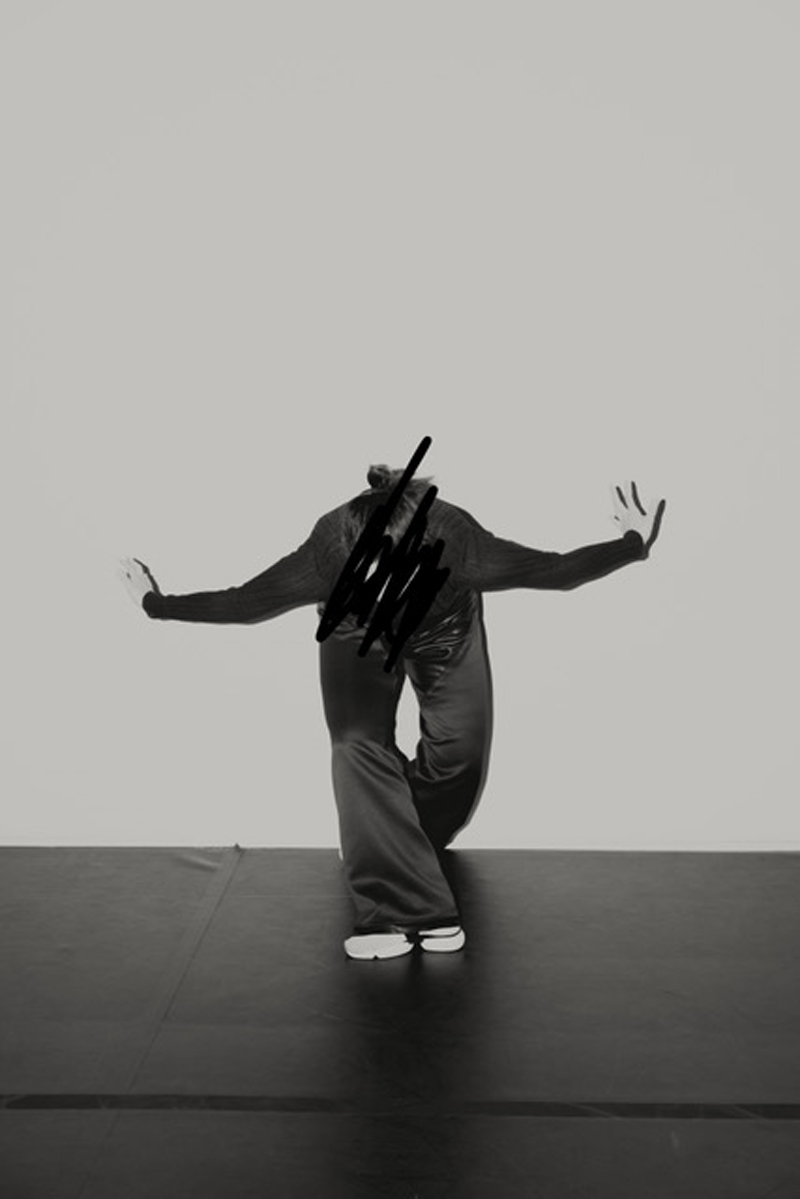
Sasha Amaya, 2024 // Photo by Peter Oliver Wolff with Sasha Amaya
Dagmara Genda: ‘Solo for Boy’ is the only piece in your trilogy of works inspired by images and not music or movement. How did you bridge the gap between image and dance in this case?
Sasha Amaya: ‘Solo for Boy’ came about in two ways. The first was at an audition in France some years ago. There were a bunch of choreographers and young dancers. Everyone was doing these very precise movements in space, and they were doing them really well! [she demonstrates] And then there was one guy who was just sort of doing it more loosely, more sloppily, and he was so beautiful. Everyone kept saying, “he’s so beautiful!” I was also saying, “he’s so beautiful!” And he really was! But, I know that the other dancers weren’t getting away with this looseness in their bodies. I know that I wasn’t getting away with this looseness in my body. So I started wondering why we give certain people this kind of permission, and others not.
This caused me to question my own frameworks of attraction and desire, value and judgement. I saw my double standard as problematic, but I also recognised that it was there.
Around the same time, I was looking at portraits of young men from the 1800s. The pictures in the 15- and 1600s, as well as part of the 1700s, are mostly of men at the height of their position in life, sitting with their double chins, their big noses and warts. In the 1800s, the style of portraiture changes into something relaxed, even pastoral. It also becomes vaguer and less readable. We don’t know if the image is of a peasant in a field or someone living in a city pretending to be a peasant in a field. Romanticism and the middle class come into play of course, but what interested me is how the representation of men and their beauty really changed. What I had seen in the dance studio during that audition and what I saw in these portraits felt hugely resonant. This particular type of easy, careless, lithe male beauty still remains present in our artistic and fashion communities.
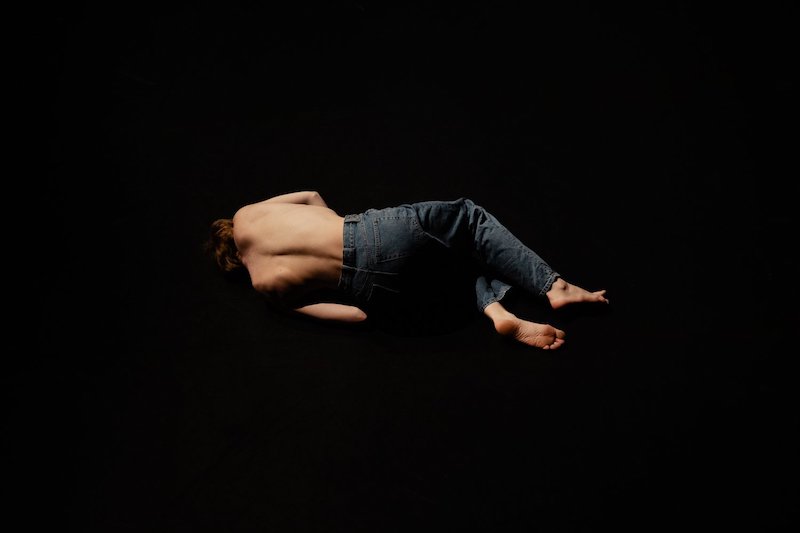
Sasha Amaya: ‘Solo for Boy,’ 2024 // Photo by Peter Oliver Wolff, courtesy of the artist
DG: Compared to female beauty, male beauty is hardly ever thematised. John Berger famously wrote, “Men look at women. Women watch themselves being looked at.” Why male beauty now?
SA: It’s very much under-discussed. When I was doing the research on this project, it was difficult to find books or photo essays on this topic, and the books I did find were often from a queer perspective, but an examination of dominant, so-called white, heteronormative forms of masculinity were often missing.
Performance is an interesting way to look at this topic. We can understand things academically, politically or intellectually in an essay, but in a performance we are confronted with a real body in a close space right next to us.
DG: …and also confronted with a real person, which is so much more complicated than a performer or a body. This sense of nuance and complication is present in your texts.
SA: These three works have a lot of internal friction. I think they also create friction for the audience. They are neither cynical nor ironic, and that earnestness can make people uncomfortable.
In ‘Sarabande,’ for instance, the audience was not sure if this non-European choreographer was trying to do Baroque European dances and not getting it right. There is a lot of condescension that comes from the audience very quickly.
‘Solo for Boy’ is a very different piece, but there is also a lot of ambiguity. There is this figure that is so beautiful and charming, so “able,” but also fragile and problematic and even icky. To me, all of these things have something in them that I love, but also something that is not totally good. It is important to be able to track our own responses and be able to sit with that complexity that is a part of our world.
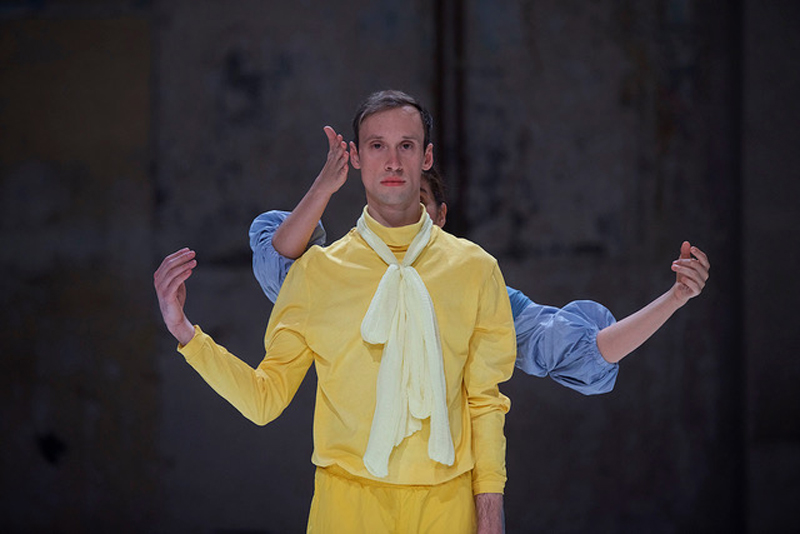
Sasha Amaya: ‘Sarabande,’ 2020 // Photo by Dieter Hartwig, performed by Falk Grever and Sasha Amaya
DG: Could art be seen as a utopian space were the webs of power, both within and beyond the individual, can be safely examined?
SA: “Men” are both a social structure and individuals that are a part of my life—socially, professionally, romantically. It is therefore hard to confront directly. All forms of art are really important spaces that can produce a little gap between these roles, where we can ask: “What is this exactly? What is this structure? What is this feeling?”
An improvisation teacher once said to me that it’s not that everyone needs to be there all the time. Some people are missing, some come late. That’s ok. In the end, it is all about how they get integrated.
DG: I like your idea of “oxygenating” supposedly obsolete artistic forms. Is this a strategy to keep art relevant?
SA: I let my pleasure and curiosity lead me. Baroque music is amazing! My fascination with Baroque dancing lies in the detail, gesture and the pleasure of the precision of movement in the form.
But then my pleasure comes up against something that is complicated. The choreographer in me needs to unpack that. The choreographer is the critical side that asks: “how do we put this on stage? What does it mean when it is presented to a public?”
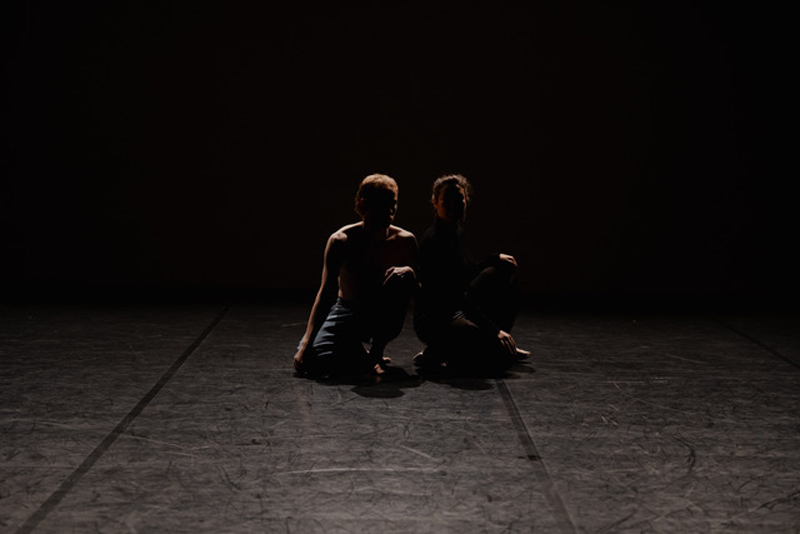
Sasha Amaya: ‘Solo for Boy,’ 2024 // Photo by Peter Oliver Wolff, performed by Félix Deepen and Sasha Amaya
DG: ‘Solo for Boy’ is not really a solo; you are also performing.
SA: I first developed ‘Solo for Boy’ alone. I was working with these images, a mirror and my own body. There are things that I see in paintings, that “men” do… [she slides casually across the dance floor and falls effortlessly into a lounging pose]… these tiny little gestures. [the flick of a wrist] The feedback I received was that I should just perform it. But I felt if I performed it alone, it would become a comment on gender performativity and transformation, and what I was really interested in was this body that is allowed very different things than my own.
That said, I was also aware that the way my body is perceived is interesting to some people. But I also felt, like in that audition, that people give me less generosity. So I was interested in bringing these two bodies together. I am not the main figure, but I felt it was important to show that contrast and the origin of these movements.
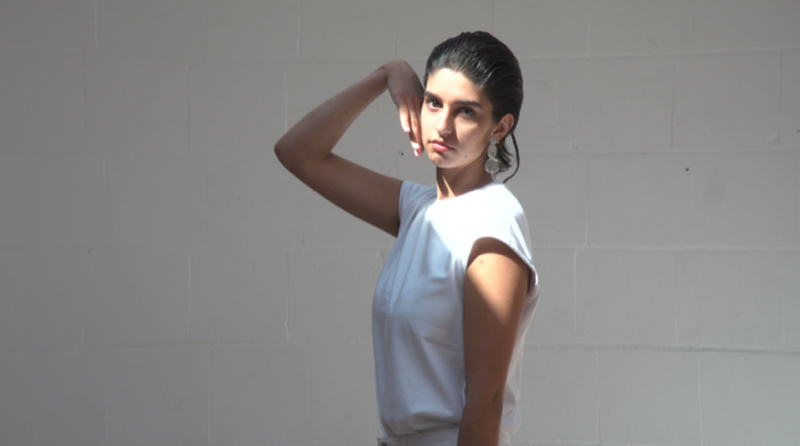
Sasha Amaya: ‘Orfeo,’ 2022, research image, performed by Avila Lorena // Photo by Sasha Amaya
DG: So it is not only about desire, it is about you becoming the boy, about using these dominant motifs as an emancipatory gesture?
SA: It is more like a desire mirror than emancipatory gesture. In this way, it is interesting to understand what the audience sees when they see this work.
DG: Are you often careful about bodily perception—like race, gender, shape, ability—when you cast your performers? I am tempted to consider what this work would be like if it were performed by a non-white dancer.
SA: What has been interesting about this process, is the continued conversation about race and language that it has engendered. It’s important to remember that racialisation and racism are structures and processes. It is not that the performer is white (something essential) and that, in the German context, I am racialised (a process of othering). He is also racialised-as-white, which, of course, often gives certain privileges to the person in that body, at least in the western European context. In this sense, racialisation is an active verb.
By keeping it an active verb, we make not only clear that everyone is a part of this structure, but also that there are multiple perspectives and that it is possible to change things. As a verb, it is transformable, and in motion.
Artist Info
Exhibition Info
Dock 11
Sasha Amaya: ‘Solo for Boy’
Performance: Jan. 11-14, 2024
World Premiere: Thursday, Jan. 11; 7pm
Admission: € 16,52 (reduced € 11,34)
dock11-berlin.de
Kastanienallee 79, 10435 Berlin, click here for map






















